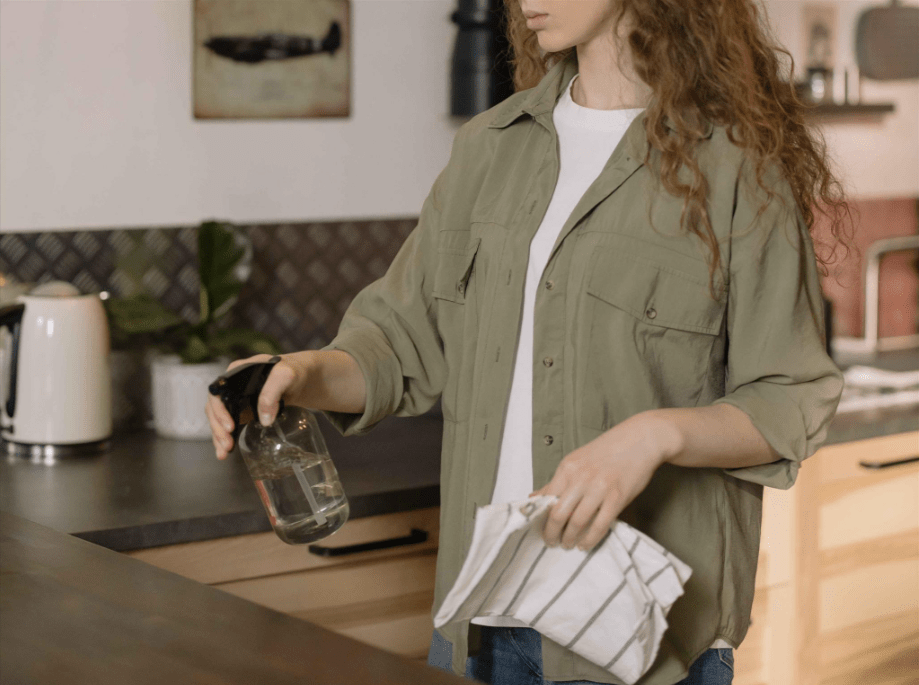Completing a drywall project can transform your living space, but it often leaves behind a substantial amount of dust that can be challenging to clean. The fine particles from drywall can settle on surfaces throughout your home, creating a messy and potentially unhealthy environment. Fortunately, you can tackle this problem using common household items and some practical techniques explained on the nw maids site. In this article, we’ll explore the best ways to clean drywall dust effectively and efficiently without specialized cleaning products.
Understanding the Challenges of Drywall Dust
Before we dive into cleaning methods, it’s essential to understand the unique challenges posed by drywall dust:
●Fine Particles: Drywall dust consists of extremely fine particles that can easily become airborne and settle on various surfaces.
●Residue: Unlike typical household dust, drywall dust has a unique texture and can be more challenging to remove.
●Potential Health Risks: Inhaling drywall dust can be harmful to your respiratory system, so it’s crucial to clean it thoroughly.
Now, let’s check homecleaningtips.net and explore the best methods for cleaning drywall dust with items you likely already have at home.
Method 1: Vacuuming with a HEPA Filter
A vacuum cleaner with a HEPA (High-Efficiency Particulate Air) filter is one of the most effective tools for cleaning drywall dust. Here’s how to do it:
●Equip Your Vacuum: Ensure your vacuum cleaner is equipped with a HEPA filter. This specialized filter is designed to capture fine particles like drywall dust.
●Use a Brush Attachment: Attach a soft brush attachment to your vacuum cleaner. This will help dislodge and agitate the dust from surfaces.
●Slow and Steady: Vacuum the affected areas slowly and methodically. Pay attention to walls, ceilings, floors, and any other surfaces where drywall dust may have settled.
●Empty the Vacuum Bag or Canister: After cleaning, empty the vacuum bag or canister outside to prevent drywall dust from recirculating in your home.
Method 2: Dry Dusting with a Microfiber Cloth
Dry dusting with a microfiber cloth is an effective way to remove drywall dust without the need for water or cleaning solutions. Follow these steps:
- Choose a Microfiber Cloth: Select a clean microfiber cloth. Microfiber is excellent at capturing and holding onto fine particles.
- Fold the Cloth: Fold the cloth to create multiple layers. This will increase its dust-capturing ability.
- Wipe Gently: Gently wipe surfaces where drywall dust has settled. Avoid pressing too hard to prevent scratching or spreading the dust.
- Frequent Shaking: Periodically shake out the cloth outside to release trapped dust.
Method 3: Tackling Stubborn Dust with Damp Cloths
For stubborn drywall dust that doesn’t come off easily with dry dusting, you can use a slightly damp cloth. Here’s how to do it safely:
- Wring Out the Cloth: Dampen a clean cloth with water and wring it out thoroughly. It should be slightly damp but not dripping wet.
- Test a Small Area: Before applying the damp cloth to a large surface, test it on a small, inconspicuous area to ensure it doesn’t damage the finish.
- Wipe Gently: Wipe the affected area gently with the damp cloth, making sure not to saturate the surface.
- Dry Thoroughly: After cleaning, use a dry microfiber cloth to wipe the surface and remove any remaining moisture.
Method 4: Using a Tack Cloth
A tack cloth is a sticky, resin-coated cloth that is often used in woodworking but can be effective for cleaning drywall dust as well. Here’s how to use it:
- Purchase a Tack Cloth: You can find tack cloths at hardware stores or online. They are usually inexpensive.
- Unfold the Cloth: Unfold the tack cloth, and it will become slightly sticky.
- Wipe Surfaces: Gently wipe the tack cloth over surfaces with drywall dust. The tackiness will help capture and hold the dust.
- Dispose After Use: Once the tack cloth is full of dust or no longer sticky, dispose of it.
Method 5: Homemade Cleaning Solution
If you’re dealing with drywall dust on surfaces that can handle moisture, you can create a homemade cleaning solution. Here’s how:
- Mix a Solution: In a spray bottle, mix a solution of water and a small amount of mild dish soap. Alternatively, you can use white vinegar diluted with water.
- Spray and Wipe: Lightly spray the cleaning solution on the affected surfaces and wipe them with a clean cloth. Ensure the cloth is not overly saturated.
- Dry Thoroughly: After cleaning, use a dry cloth to wipe surfaces again and remove any remaining moisture.
Method 6: Preventative Measures
The best way to deal with drywall dust is to prevent it from spreading in the first place. Here are some preventative measures:
- Seal Off Work Areas: If you’re doing drywall work, create a sealed-off area with plastic sheeting and masking tape to prevent dust from spreading.
- Use Dust Barriers: Consider using dust barriers or curtains to separate the work area from the rest of your home.
- Ventilation: Open windows and doors to allow fresh air to circulate, which can help reduce dust concentration.
- Wear Protective Gear: When working with drywall, wear a dust mask, safety goggles, and protective clothing to minimize contact with the dust.
Cleaning drywall dust can be a tedious task, but with the right methods and household items, you can effectively remove it from surfaces in your home. Whether you choose to vacuum with a HEPA filter, dry dust with a microfiber cloth, use a damp cloth, employ a tack cloth, create a homemade cleaning solution, or implement preventative measures, you’ll be on your way to a dust-free living space. Remember that a clean home not only looks better but also promotes a healthier indoor environment for you and your family.



